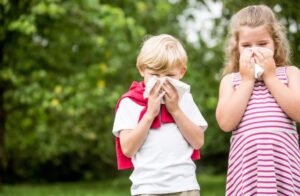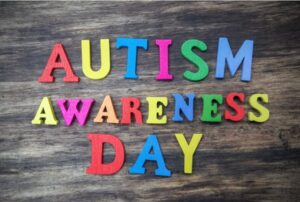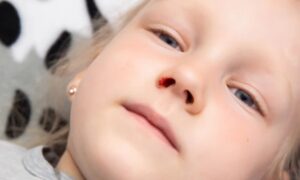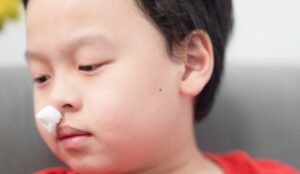Today, let’s talk about a topic that many parents are concerned about—pityriasis alba. This is one of the most common skin issues in children, and it often leaves parents scratching their heads, especially when they notice white patches appearing on their kids’ faces or arms. Many parents worry about whether it's a serious skin condition, even though it’s typically harmless. So, what are the common myths about pityriasis alba? And what truths should we really know about it? Let’s clear up some confusion and get to the bottom of this.
What is Pityriasis Alba?
Before diving into the myths, let’s first clarify what pityriasis alba is. As the name suggests, pityriasis alba appears as pale, irregular white patches on the skin, usually on the face (especially the cheeks), arms, and upper back. Although its name might sound concerning, it’s actually a relatively benign skin condition.
Pityriasis alba is most commonly seen in children, particularly those between the ages of 4 and 7. While this condition is not contagious and typically doesn’t cause any long-term issues, its appearance often worries parents, leading to a lot of misunderstandings. Let’s take a look at some of the most common myths and the real facts behind them.
Myth 1: Pityriasis Alba is Caused by a Skin Infection
Truth: Pityriasis alba is not caused by a bacterial or fungal infection. It’s actually a non-contagious skin condition that’s typically linked to immune responses, skin dryness, or mild allergic reactions. In other words, it’s not an infection, so your child can’t catch it from someone else.
The condition is believed to result from a weakened skin barrier. When the skin becomes dry or exposed to certain allergens, it can develop these white patches. This is especially common during dry weather, such as in winter, when the air is low in humidity, and kids' skin is more likely to become dry, making them more prone to developing pityriasis alba.
Myth 2: Pityriasis Alba Will Go Away on Its Own, No Treatment Needed
Truth: While it’s true that pityriasis alba often resolves on its own as children get older, it doesn’t mean treatment is unnecessary. If the patches are persistent or get worse, some treatment can help speed up recovery.
The most common treatment involves moisturizing the skin regularly to restore hydration and protect the skin barrier. In some cases, a doctor may recommend a mild corticosteroid cream, particularly if there is any inflammation or irritation. These treatments are generally safe, but it’s always best to consult with a doctor before using any medication.
Myth 3: Pityriasis Alba Will Leave Permanent Scars
Truth: Pityriasis alba does not leave permanent scars. While the white patches may persist for a period of time, they usually fade over time as your child grows. The skin naturally undergoes metabolic processes as it matures, and the patches typically disappear or become less noticeable.
Some parents may be concerned that the white patches will make their child look different, especially in social situations. However, pityriasis alba doesn’t affect your child’s normal activities or overall health, and with patience and proper care, the condition usually resolves itself.
Myth 4: Pityriasis Alba Is Caused by Poor Nutrition
Truth: This is another common misconception. While good nutrition is important for overall skin health, pityriasis alba is not caused by poor nutrition. It’s mainly related to a compromised skin barrier and immune response, often triggered by dry skin, seasonal changes, or allergic factors.
That said, a healthy diet can certainly help maintain skin health. Ensuring your child gets enough vitamins like A, C, and E, which promote skin repair, can be beneficial. However, poor nutrition is not the root cause of pityriasis alba.
Myth 5: Pityriasis Alba Only Affects Children with Lighter Skin
Truth: While pityriasis alba may be more noticeable in children with lighter skin, it can occur in children of all skin tones. In fact, for children with darker skin, the white patches may appear more prominent, creating a contrast that makes the condition more noticeable.
No matter the skin color, children who are susceptible to environmental triggers (like dry air or allergens) can develop pityriasis alba. So, parents of children with darker skin shouldn’t assume that their kids are immune to this condition.
Myth 6: Pityriasis Alba Is Caused by a Dirty Environment
Truth: Pityriasis alba has nothing to do with the cleanliness of your child’s environment. It’s primarily a result of dry skin, mild allergic reactions, or a weakened skin barrier. While maintaining good hygiene—regular baths and clean skin—is important for overall skin health, it doesn’t directly affect the development of pityriasis alba.
That said, if your child’s skin is exposed to dirt or harmful substances, it could lead to other skin issues like eczema or allergic reactions, but these aren’t the same as pityriasis alba.
How to Deal with Pityriasis Alba?
Since pityriasis alba is generally harmless, how should you handle it? Here are a few tips:
- Keep the Skin Moisturized: Regularly apply fragrance-free moisturizers to keep your child’s skin hydrated, especially in dry or cold weather. Moisturizing is key to treating pityriasis alba.
- Avoid Excessive Sun Exposure: If your child spends a lot of time in the sun, make sure to apply sunscreen to protect the skin. Sun exposure can sometimes worsen white patches.
- Use Medications Recommended by a Doctor: If the condition is persistent or bothersome, see a doctor. They may recommend a mild steroid cream or other topical treatments to ease symptoms.
- Maintain a Healthy Diet: While nutrition isn’t the cause of pityriasis alba, eating a well-balanced diet can support overall skin health. Encourage your child to eat foods rich in vitamins that support skin repair.
In summary:
While pityriasis alba might be concerning at first glance, it’s actually a relatively harmless skin condition. By understanding the myths and facts behind it, and taking the right steps to care for your child’s skin, you can help them through this phase and ensure their skin stays healthy. If you’re unsure or worried, always consult a healthcare professional for advice!
References:
- American Academy of Dermatology. Pityriasis Alba.
- WebMD. Pityriasis Alba: Symptoms, Causes, and Treatment.
- Mayo Clinic. Pityriasis Alba.
- National Eczema Association. Pityriasis Alba and Eczema.













